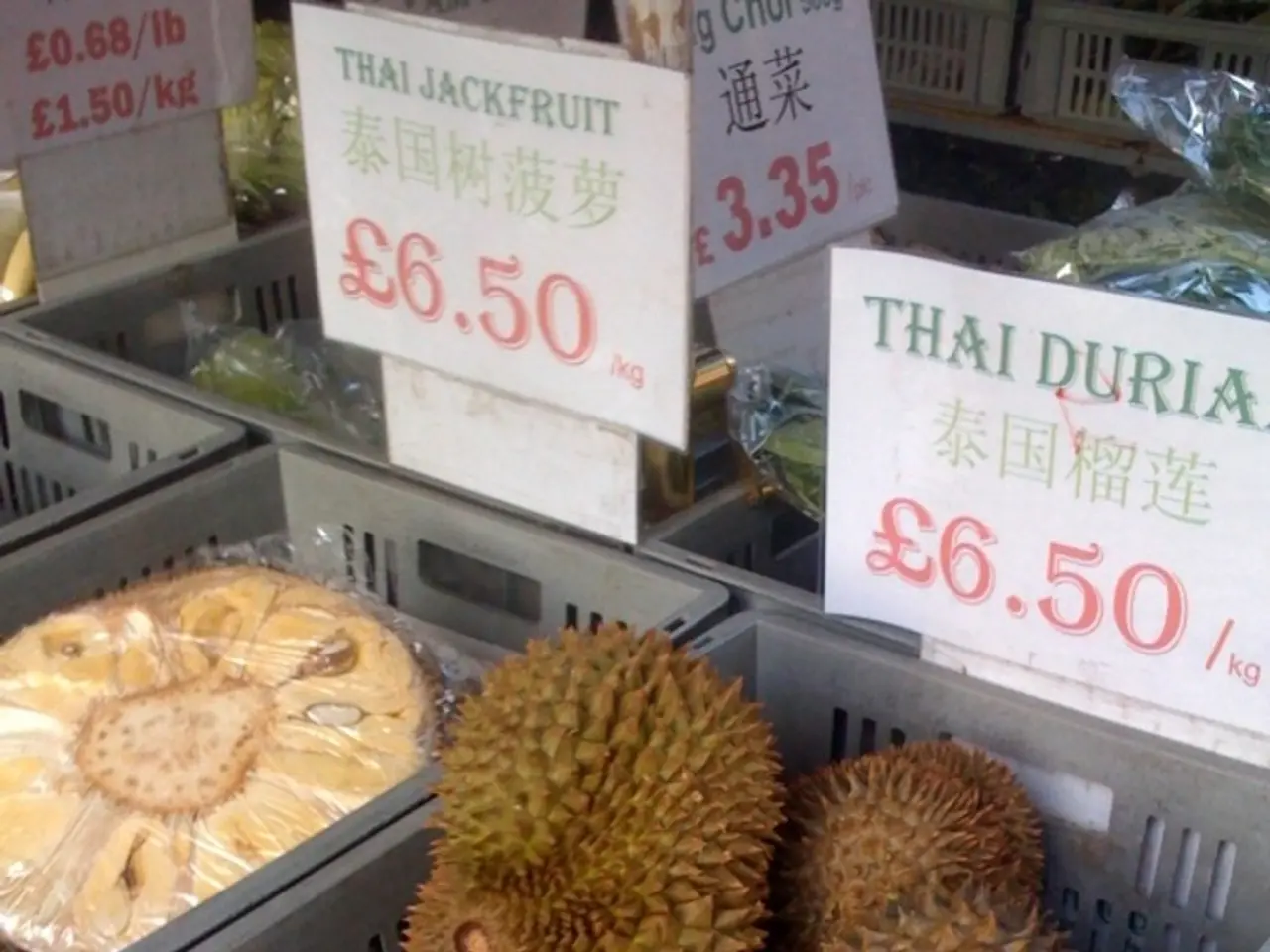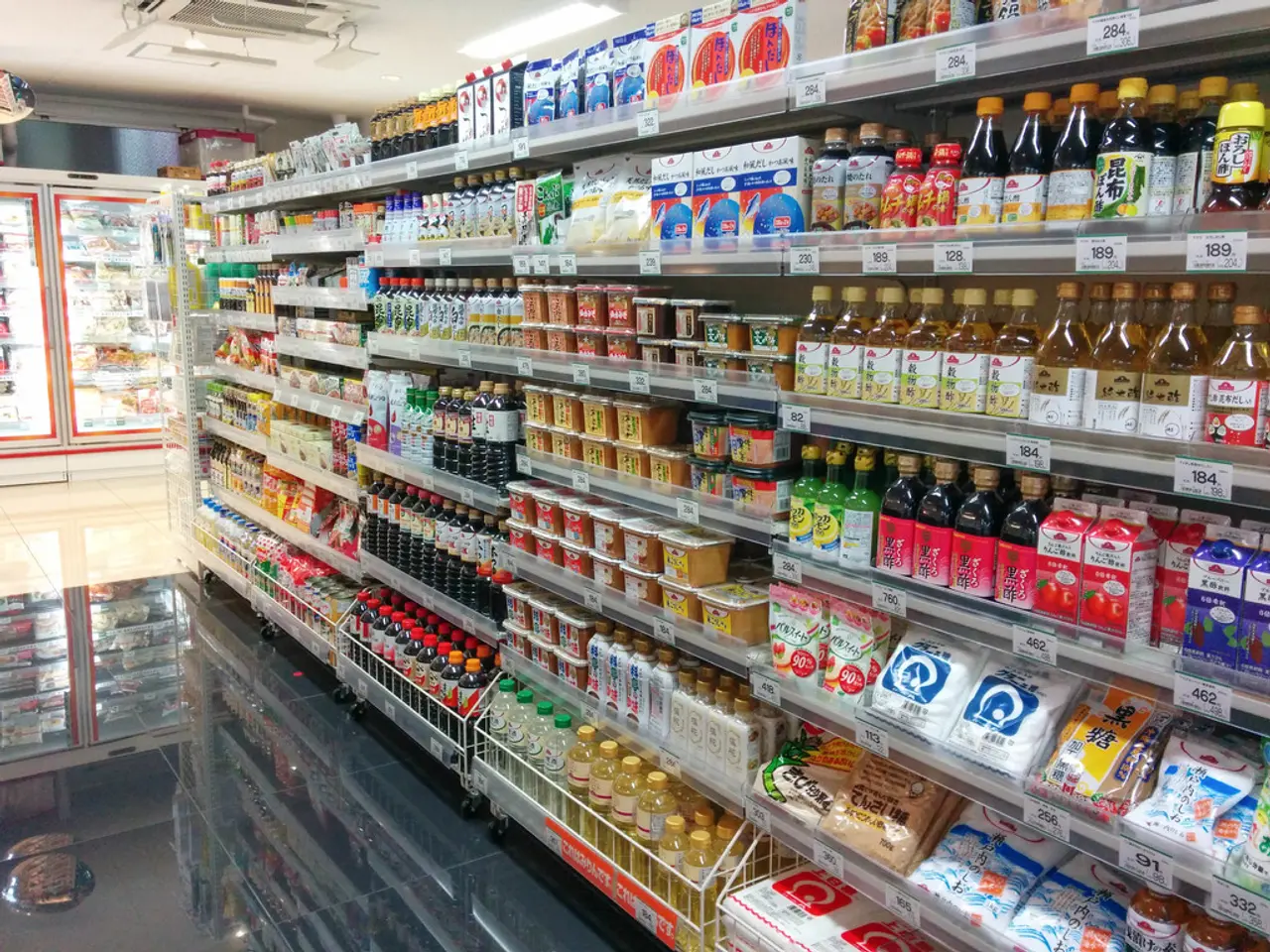Export revenues of fruits and vegetables surpass $3.8 billion during the first seven months of the reported period.
In the dynamic world of international trade, Vietnam's fruit and vegetable sector has been making significant strides. The US has emerged as the fastest-growing market for Vietnamese exports, with a staggering 166% increase in turnover in 2025. This growth has propelled the US market share from 5% to 8.42%, making it a crucial driver of Vietnam's export growth.
The surge in exports can be attributed to several key factors. Firstly, Vietnamese enterprises have been making concerted efforts to meet new market requirements, improving product quality, traceability, and compliance with international standards. This focus on quality and transparency has paid off, as strategic fruits such as passion fruit, banana, pineapple, and coconut—which are gradually gaining global recognition—are now targeting billion-dollar export revenues.
Another significant factor is the expansion of standardized growing areas, investment in deep processing, and digitalizing the value chain. These strategies aim to elevate competitiveness and respond to challenges like strict import requirements and traceability concerns. The large cultivation scale, with over 1.3 million hectares dedicated to fruit cultivation, producing around 15 million tons annually, also supports export growth potential.
Despite China remaining Vietnam's largest overall export market, its market share has slightly decreased from 65% to 52.62%. The US, with its increased demand for Vietnamese fruits and vegetables, has been closing the gap. Vietnam's fruit and vegetable export turnover after 7 months in 2025 is estimated at around $3.83 billion, aiming for an annual target of 8 billion USD.
Vietnam's imports in the fruit and vegetable sector have also been on the rise, primarily from China, the US, and New Zealand. China, with a significant share (33.48% year-to-date), has shown a continued increase in import value, while the US, as a growing importer, is also making a significant contribution.
Intriguingly, Vietnam's coconut exports have seen a dramatic price increase, with a kilogramme selling for $7.26 in 2025, up from $1.21 in 2022. This trend has continued, with increasing demand for Vietnamese coconuts being reported from Middle Eastern markets.
Looking ahead, industry experts expect stronger momentum in the second half of 2025, especially for processed fruit products. Banana and passion fruit have been identified as the next key export drivers, following in the footsteps of durian, which has already reached billion-dollar export status.
In summary, Vietnam's fruit and vegetable exports are thriving, driven by focused cultivation and processing of key fruits, rising demand in the US, and sustained volumes to China. Imports primarily come from China, the US, and New Zealand, as Vietnam adapts its supply chains to meet market demands. This dynamic trade activity underscores Vietnam's growing influence in the global fruit and vegetable market.
- The increase in Vietnam's fruit and vegetable exports can be traced back to the focus on meeting new market requirements, such as improving product quality, traceability, and adherence to international standards.
- As the US continues to demonstrate a growing demand for Vietnamese fruits and vegetables, it has become a crucial driver propelling the nation's export growth, with significant potential for further expansion in the industry.
- The AI-driven digitalization of the value chain and investment in deep processing have been key strategies employed by Vietnamese enterprises aiming to elevate their competitiveness in global markets, including food-and-drink business and lifestyle sectors.
- With a anticipated increase in processed fruit product demand in the second half of 2025, banana and passion fruit are poised to become significant contributors to Vietnam's export growth and potentially follow the success of durian, which is already at billion-dollar export status.




